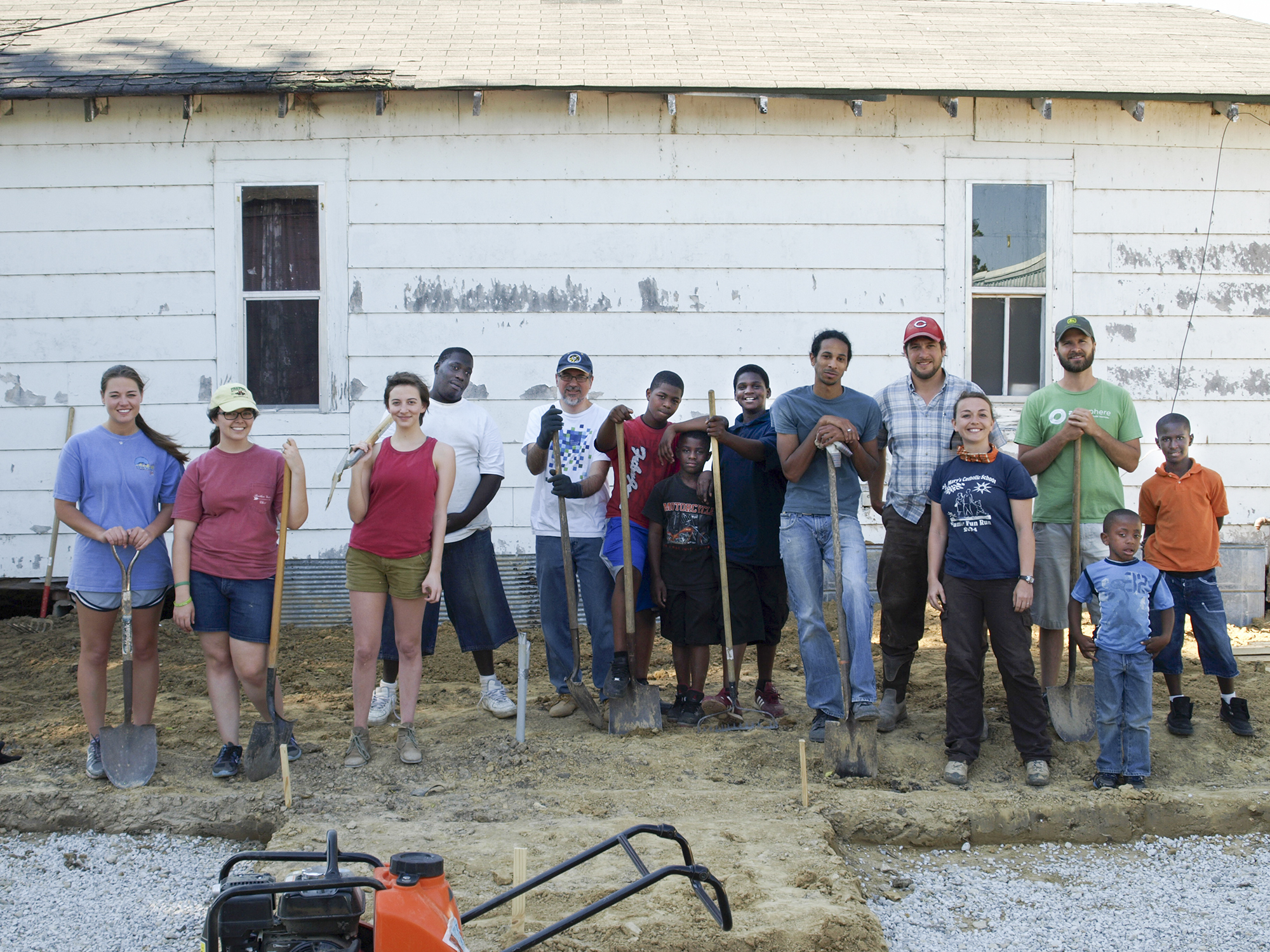Contact: Leah Barbour

A spirit of cross-state cooperation is causing big things to happen in a little place.
To improve quality of life in Greenwood's Baptist Town neighborhood, Mississippi State University faculty members and students have been working over the past three years with the Greenwood-Leflore-Carroll Economic Development Foundation, the city of Greenwood, Jackson-based Foundation for the Mid-South, and Arkansas' Walton Family Foundation.
Famous for housing blues legend Robert Johnson and well-known actor Morgan Freeman, Baptist Town is a historic African-American neighborhood is located in east Greenwood. Despite its rich cultural history, Baptist Town, like so many small communities in the Delta, faces high unemployment and rising crime rates.
Most recently, Baptist Town gained national attention during production of "The Help," a 2011 film based on a best-selling novel of the same name. The story of 1960s Mississippi civil rights struggles told through the eyes of African-American maids was shot largely in Greenwood and the surrounding area.
Today, the commitment by the MSU's Carl Small Town Center and its other partners is causing Baptist Town revitalization efforts to be realized.
The center -- the research and service arm of MSU's College of Architecture, Art and Design -- is named for Fred Carl Jr., a Greenwood native and former Viking Range Corp. owner whose major support made the CSTC possible.
CSTC was recognized with the 2011 Outstanding Student Project award of the American Planning Association for the 2010 master plan developed for Baptist Town. In 2012, the center was one of only four organizations selected to host a national Enterprise Rose Architectural Fellow.
Emily Roush Elliott was chosen to implement the major components of the award-winning Baptist Town master plan.
Elliott holds a master's degree in architecture from the University of Cincinnati, and she has worked with the MSU's Gulf Coast Community Design Studio. The studio was established in the wake of 2005's Hurricane Katrina to help rebuild Mississippi's coastal communities.
John Poros, CSTC director, said the Baptist Town plan identified key needs as affordable and functional housing, safer public spaces and improved infrastructure. He and other CSTC representatives have been working closely with Elliott as she collaborates directly with neighborhood residents.
"One thing that we've completed recently in Baptist Town is the pocket park," said Leah Kemp, CSTC assistant director. "The park is really a system of concrete pavers, a gravel path that goes through the park, and a series of benches made out of concrete posts and railroad ties."
Poros said the park is located adjacent to the film home of Help main character "Minnie." The location one of the few Baptist Town public spaces where residents may sit and talk. Other improvements include additional lighting and sidewalks, and new signage, he said.
Poros and Kemp praised Elliott for making significant progress toward meeting the master plan's major goals: improved housing and a new community center. In addition to coordinating mortgage opportunities for prospective homeowners, they said Elliot is working with subcontractors to begin foundation construction and is coordinating all project efforts directly with the city and city-owned Greenwood Utilities.
Kemp said that, while the actual Baptist Town park design was provided by a Greenwood landscape architect, MSU architecture majors worked on all aspects of construction, including grating, digging, shoveling and pouring concrete and gravel, as well as bench building.
Poros said the park is lighted, so residents may use it during the evening.
"That's pretty important because there's not another place in the neighborhood like that," he said. "The lighting is supplied by the city of Greenwood, and they'll also be doing the landscaping at the park."
Poros said grants from the Jackson and Arkansas foundations paid for construction materials while the CSTC provided funding to cover student labor. Several neighborhood residents, including children, also pitched in to help, he added.
"It's really important for architecture students to understand how difficult it is to do construction, understand all the planning that has to happen in order to do a simple construction project and understand all the steps that have to be done for something as simple as this little project," Poros said. "It's also really important for students to get directly involved in communities and do something like this. It's really their responsibility as professionals, and as students and alumni of Mississippi State, to get involved wherever they are."